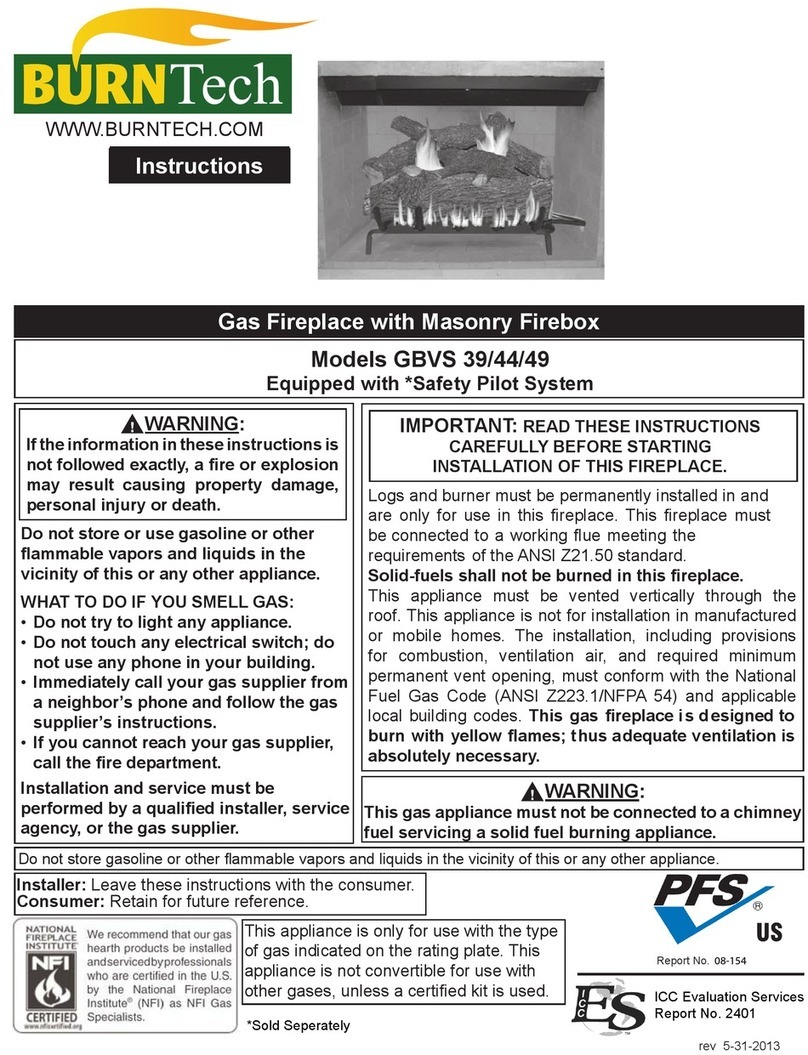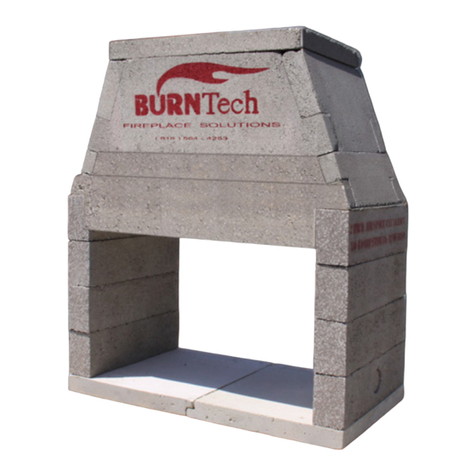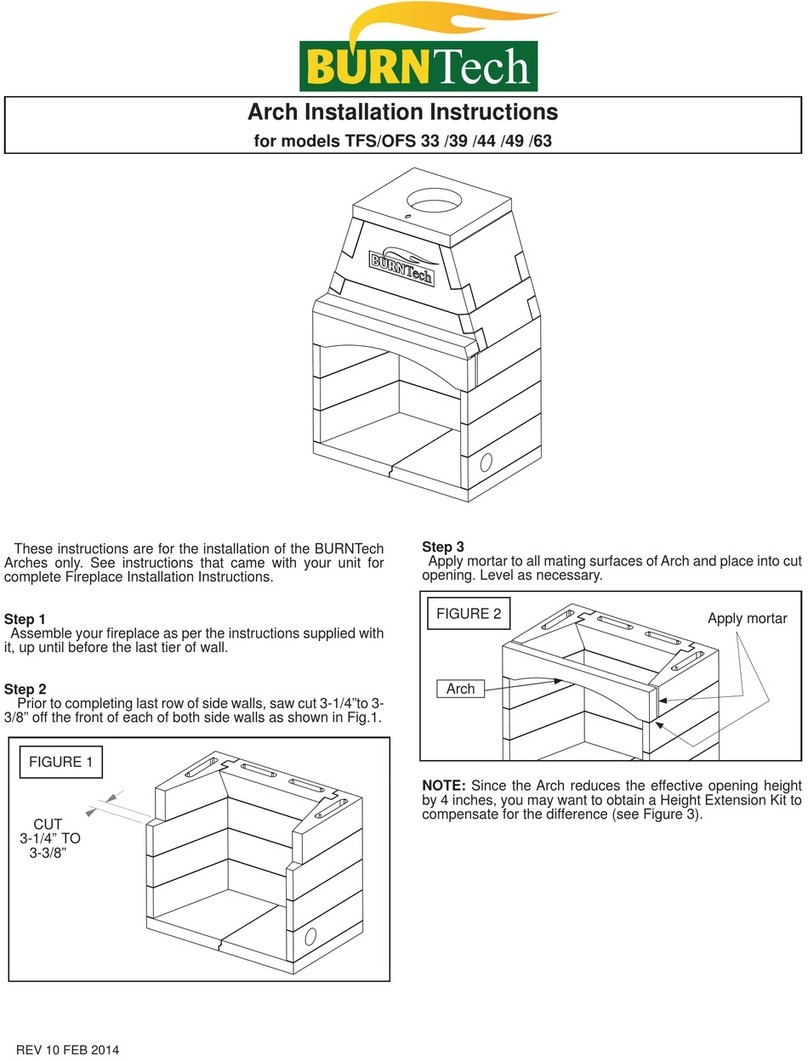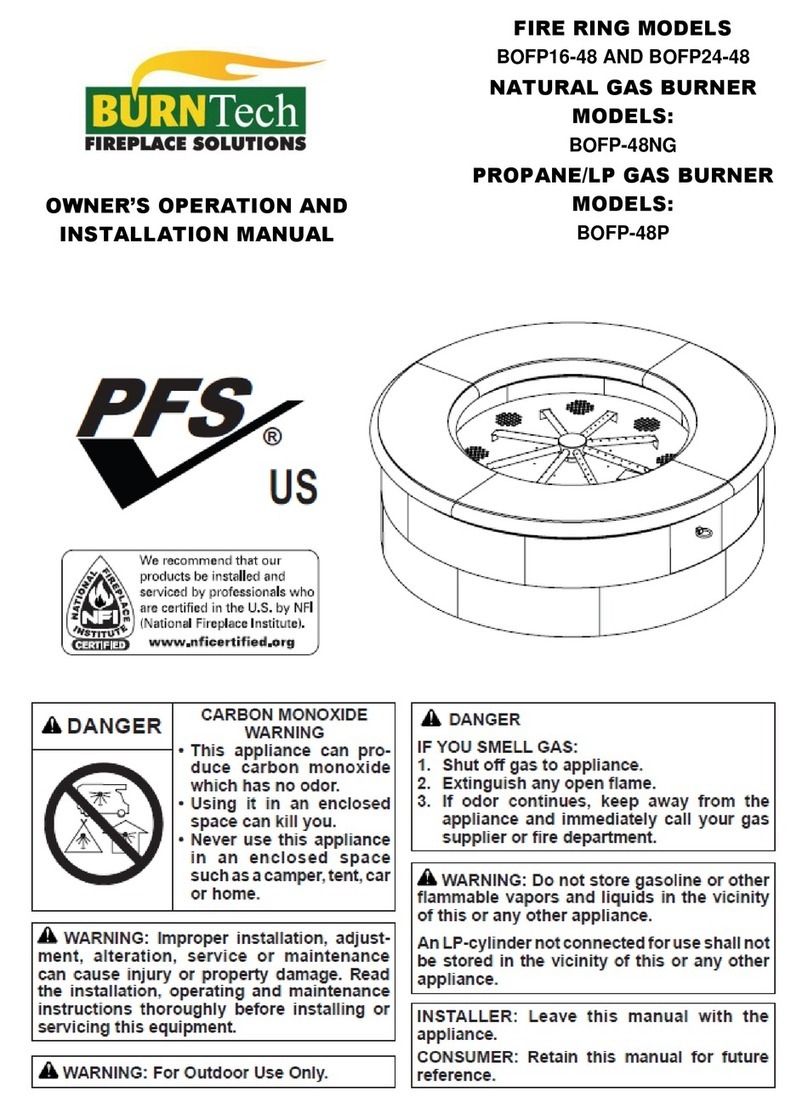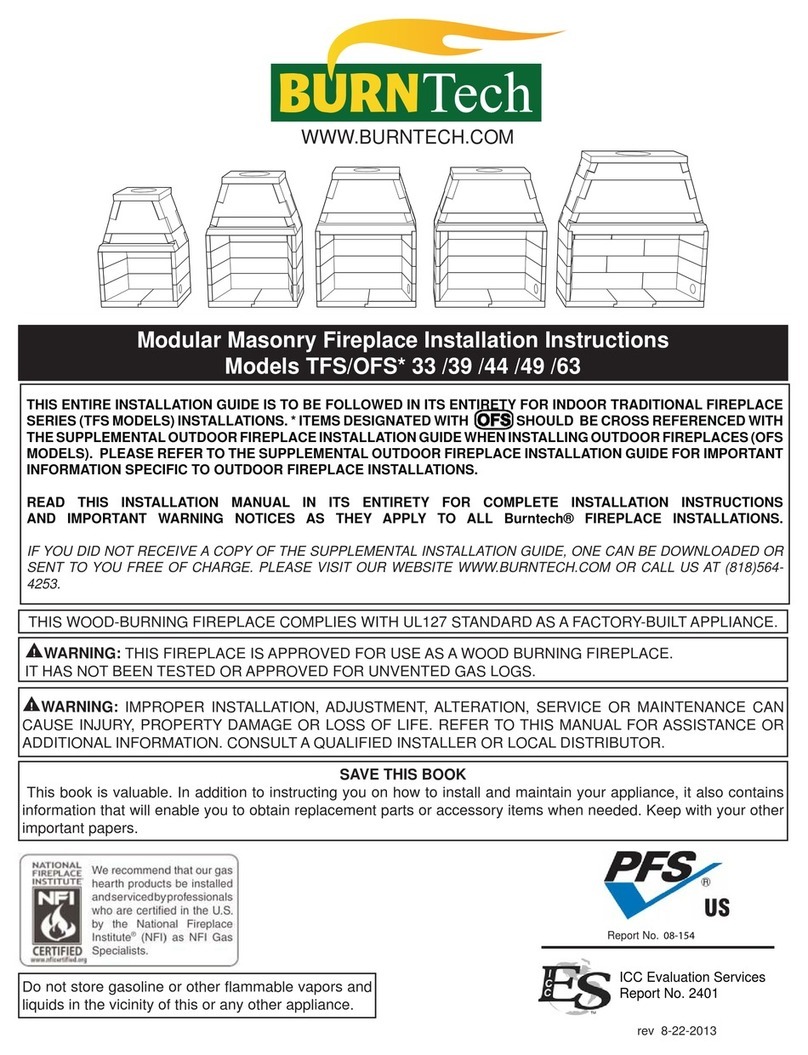
8
Clearances to Combustibles
The distance to be maintained from the surfaces of the
replace to combustibles must be observed. Below is a list of
the most common combustible materials to name a few:
Drywall Wood ooring Plywood
Sub-ooring Wood Framing Particle board
Mill board Plywood paneling
Maintain the following clearances:
Unit front, sides, rear: 2” (50 mm)
Combustible Floor: 8” (150 mm)
Combustible Sheathing above opening top: 8” (200 mm)
Sheathing or trim to opening sides: 8” (200 mm)
Mantel above opening: (refer to Fig.9)
Opening to sidewall: 24” (500 mm)
Hearth extension beyond front: 20” (500 mm)
Hearth extension beyond sides: 12” (300 mm)
Insulation from rebox: 2” (50 mm)
Understanding Clearance to Combustibles
There is a build-up of considerable amount of radiant heat
on the outer surfaces of the BURNTECH Fireplace. It’s
critical that proper clearances to combustibles be maintained
so that this radiant heat is maintained to safe limits.
Combustible Floor Clearances
TFS43-ST Fireplace haSbeen designed with clearance to
combustible floors at a minimum of 8-1/2” (eight and one half
inches) as provided by the 8” metal base and 1/2” concrete
board. Cover any part of the combustible floor system left
exposed with 1” (one inch) thick ceramic fiber insulation rated
up to 2,100°F.
The BURNTECH Steel Platform , the 1/2” concrete board
above, the 1” ceramic fiber blanket or board within the
platform (Fig.15) and the 2” clearance for dome front, and unit
sides provide the temperature safety margin to combustible
materials.
•
•
•
•
•
•
•
•
•
BURNTECH Fireplace & Chimney System
Prior to starting the installation, check with local, regional or
state codes for any restrictions or required permits regarding
your replace installation.
The BURNTECH is designed to be installed with a
listed UL-103-16” I.D. Class A, Metal Chimney System.
This BURNTECH fireplace is intended as a supplemental
heat source only. It is not intended as a primary heat
source.
It is the responsibility of the contractor installer (not the
manufacturer) to ensure that adequate combustion air is
provided for proper function of this replace. Fireplaces
take up a large volume of replacement air from outside the
house and if the house is of airtight construction, smoke
spillage may occur if proper draft is not achieved.
There are many conditions beyond a manufacturer’s
control regarding improper replace operation. The
manufacturer cannot ensure “smoke free” operation,
nor can the manufacturer take on the responsibility for
problems with surrounding construction; chimneys that
have not been built at the right heights; system drafts
caused by faulty mechanical systems; adverse weather
conditions or any other inclement environmental situations
over which the manufacturer has no control.
Inspect all replace & chimney components for evidence
of damage prior to starting installation. Consult your local
distributor for replacement parts if necessary.
Under no circumstances should you make any adjustments
or modications to the chimney system during the
installation procedure. If you do, you are not only liable
for negating the warranty, but you could very well cause a
serious malfunction of the replace. You must follow your
chimney manufacturer’s instructions.
Caution is urged if it is decided to add insulation material
to any part of the BURNTECH Fireplace or Chimney
system, be certain that the insulation material is kept at
least 2” (two inches) away from any part of the system.
When using insulation or vapor barrier materials, cover
with a layer of plywood, particle board or gypsum board
to maintain the specified 2” (two inch) clearance.
Air spaces around rebox must remain open. DO NOT ll
these open spaces with insulation or packing material of
any kind.
Chimney System Heights
When installed, the maximum overall height of the chimney
system from bottom of replace to the top/termination chimney
is 40 feet. The minimum installed height of the completed
Chimney System is 14 feet with a straight ue stack, 17 feet if
the chimney includes one or two offset sections.
1)
2)
3)
4)
5)
6)
7)
8)
Figure 9
